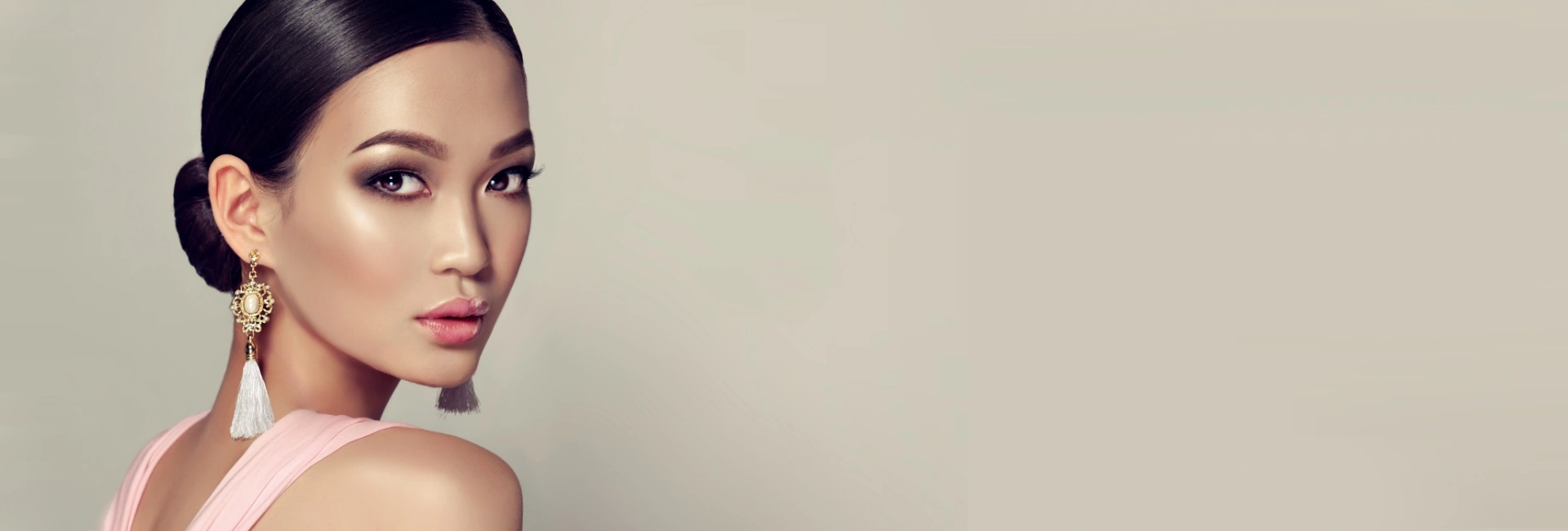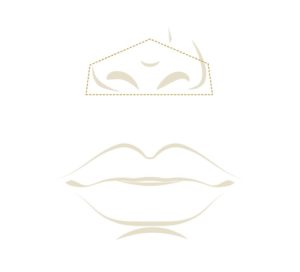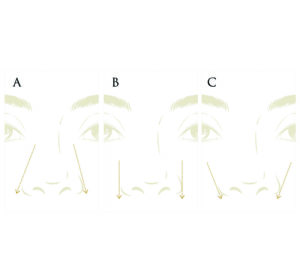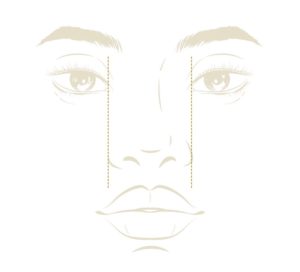Asian rhinoplasty is a plastic surgery procedure designed to enhance the aesthetic appearance of the nose for Asian patients. Many Asian rhinoplasty patients are seeking to ‘westernize’ their noses by augmenting the bridge and refining the tip to appear more streamlined like Caucasian noses. Dr. Cangello is highly skilled in performing Asian rhinoplasty to achieve this desired look when requested. However, he also specializes in preserving and accentuating facial features and the unique aesthetic qualities valued within Asian cultural norms, while respecting and retaining the patient’s ethnic identity. The goal is to create a nose that complements the patient’s features and aligns with their preferences while respecting their cultural background. The ideal outcome should harmonize with the patient’s features, while also integrating the individual’s preferences into the development of the surgical strategy.
Dr. David Cangello is New York City’s trusted rhinoplasty surgeon, with a specialization in assisting patients of Asian heritage to attain their aesthetic aspirations through cosmetic procedures including nose surgery. Dr. Cangello is a Board-Certified Plastic Surgeon with years of experience who is known for his exceptional skills in the realm of ethnic rhinoplasty. Renowned not only in New York City but also in broader circles, Dr. Cangello stands out as a top-tier facial plastic surgeon in this field.
Benefits of Asian Rhinoplasty
The primary objective of Asian rhinoplasty, sought by the majority of Dr. Cangello’s patients, is the enhancement of nasal aesthetics. Beyond its cosmetic benefits, this procedure can also have a positive impact on a patient’s respiratory function. Various aesthetic concerns are effectively addressed through the procedure.
Candidates for Asian Rhinoplasty
Asian rhinoplasty presents an opportunity for individuals of Asian descent to refine their nasal appearance and achieve facial harmony. Potential candidates must possess practical expectations regarding the achievable outcomes of this facial surgery. Furthermore, good candidates for Asian rhinoplasty have finished growing—generally by the mid-to-late teenage years—and do not smoke or are willing to quit smoking for a minimum of three months before the scheduled surgery.
Caucasian Rhinoplasty Vs. Asian Rhinoplasty
Shared standards of beauty often lead Dr. Cangello’s Asian and Caucasian patients to articulate similar objectives for rhinoplasty. However, the differences in anatomical characteristics between these two groups result in distinct strategies to accomplish these shared goals.
In broad terms, the Caucasian rhinoplasty procedure generally involves reduction, aiming to diminish or refine nasal features. Conversely, Asian rhinoplasty frequently employs augmentation, focusing on enhancing specific attributes. Of course, every case is unique as sometimes Asian patients do have an overprojecting dorsum, requiring a reductive procedure. That’s why Dr. Cangello customizes surgery for each patient; his comprehensive knowledge of anatomical variations specific to those of Asian ethnicity allows him to deliver natural-looking results.
The Asian Rhinoplasty Procedure

Dr. Cangello performs Asian rhinoplasty on-site, at his fully accredited surgical facility located in Manhattan, New York. The procedure is carried out under general anesthesia.
The duration of Asian rhinoplasty surgery is approximately 3-4 hours depending on the extent of the procedure and begins with Dr. Cangello creating incisions to expose underlying nasal structures including cartilage and bone. He then executes predetermined surgical techniques to enhance the nasal appearance. Detailed descriptions of modifications are elaborated upon in the following section. After implementing all modifications according to the surgical plan, Dr. Cangello will meticulously close the incisions and a nasal splint and/or dressing are applied as required. Subsequently, the patient regains consciousness and is moved to a private recovery suite, where vigilant nursing supervision ensues until the anesthesia effects subside.
Distinctive Approaches Employed in Asian Rhinoplasty
The ensuing sections will elucidate the prevalent surgical techniques frequently utilized during Asian rhinoplasty procedures.2
Enhancement of Bridge Height
In Asian aesthetics, a tall and refined bridge holds significant appeal. Asian rhinoplasty predominantly entails enhancing the basal bridge, in contrast to the common objective among Caucasian patients, who often seek bridge reduction (such as hump removal). Dr. Cangello’s augmentation of the bridge typically adheres to a conservative approach to maintain a natural-looking appearance. Bridge elevation is typically achieved by employing cadaveric rib and/or cartilage grafts from the patient’s septum. Augmentation of the dorsum imparts a narrower bony width to the nose which often obviates any need to reposition the nasal bone. However, if nasal bone repositioning is needed, this is done with osteotomies performed with Piezo Ultrasonic Rhinoplasty instruments.
Cartilage Graft for Bridge Augmentation
Dr. Cangello can often use the patient’s cartilage to enhance the nasal bridge. This involves taking cartilage from elsewhere such as the septum, the ear, or from cadaveric rib if he needs to augment the entire dorsum. Cartilage extraction from the septum is a commonplace procedure in rhinoplasty and will not affect aesthetics. Post-extraction, the harvested cartilage is fragmented into small pieces. Subsequently, a section of connective tissue is collected from the temple vicinity beneath the scalp, shaped into a rectangular form, and employed to craft a tubular structure. Within this construct, the fragmented cartilage functions as a nasal graft. This graft is then positioned along the length of the bridge area to facilitate augmentation, and if necessary, molded for optimal conformation.
Harvesting a patient’s fascia and septal cartilage has the advantage of the graft’s organic origin from the patient’s own body, resulting in a diminished risk of postoperative infection or displacement. While this method does yield additional surgical scars, they are small and so well hidden within the hairline that they are virtually undetectable.
Utilizing an Implant for Bridge Augmentation
Some patients may be familiar with nasal implants, which can be used to elevate the nasal bridge. However, Dr. Cangello never uses implants for Asian rhinoplasty procedures. This is because they are made of plastic (silicone) and pose many potential risks, including a heightened likelihood of complications in the postoperative phase, such as deviation, protrusion, extrusion (when an implant emerges through the skin), and infection, among others.3 Additionally, these implants tend to look “too perfect” which is unnatural. With this in mind, Dr. Cangello uses cadaveric cartilage. The advantage of using cadaveric rib cartilage over autologous rib cartilage in rhinoplasty is the absence of a chest scar, the elimination of any chest incision that needs healing, and the avoidance of the potentially severe postoperative pain and discomfort that can result from rib cartilage harvest.
Enhancing Tip Projection
Dr. Cangello’s patients of Asian descent often express concerns about the perceived lack of projection in their noses, describing them as ‘flat’ or ‘low.’ The term “tip projection” pertains to the extent to which the nose tip extends outward from the face. He addresses this concern by augmenting tip projection using the patient’s cartilage, typically a septal extension graft to obtain lasting tip projection. This cartilage is sourced from the nasal septum and sutured to the cartilaginous framework of the nasal tip, effectively enhancing the tip region. Additionally, weak alar cartilages can be augmented with ear or septal cartilage as necessary to obtain adequate projection as needed. Thick skin, common in Asian patients, is addressed by creating strong and properly projected tip structure underneath.
Extending Nasal Length
Nasal length is determined by the distance from the root (between the eyebrows) to the nose’s tip. Many Asian individuals have concerns with shorter nasal lengths, which can result in a somewhat ‘upturned’ appearance. Patients with shorter noses might express concerns about overly visible nostrils or a ‘pig-like’ nose. Conversely, those with excessively long noses may describe them as appearing droopy. Lengthening the nose often coincides with increasing the nasal projection, as these concerns often coexist. The process involves harvesting septal cartilage, securing it to the tip’s cartilaginous framework, achieving both outward and downward adjustments to the shape of the nose. If insufficient septal cartilage is present, which may be the case because Asian patients tend to have smaller septal cartilages, cadaveric rib may need to be used.
Refining the Nasal Tip
Even after addressing nasal projection and length, the tip of the nose may still appear bulky, bulbous, or rounded. Tip refinement is a frequent request for Asian rhinoplasty patients. This involves modifying the cartilage to create a narrower and more aesthetically pleasing tip. Asian noses typically possess broader and less defined tip cartilage compared to Caucasian noses. Refinement may encompass cartilage trimming, repositioning, reshaping, and grafting to achieve a more refined and thinner appearance.
The thickness, or density, of the nasal skin also influences the tip’s appearance. Patients with thicker nasal skin might require more pronounced cartilage modifications for visible changes.
Narrowing the Nostril Width
Asian rhinoplasty candidates might express concerns about wide nostrils or rounded nostril contours. Alar base refinement can rectify these concerns. This procedure involves excising a portion of the nostril floor, resulting in a slightly narrower appearance. For more substantial narrowing, additional dissection and sutures can be employed to achieve a more assertive reduction.
Reducing Nostril Width
Asian individuals seeking rhinoplasty often express dissatisfaction with wide nostrils or rounded nostril shapes. Both concerns can be addressed through alar base refinement. Rectifying a patient’s wide nostril base typically involves the removal of a section of the nostril floor so the overall nasal base appears subtly narrower. For those requiring a more significant reduction, a larger section of the nostril floor can be excised to achieve a more pronounced refinement.
Narrowing the Nostril Base
Correction of Nostril Flaring
Excessive curvature of the nostrils, commonly referred to as nostril flaring, can detract from the desired aesthetic. Ideally, the nostrils should appear triangular when viewed sub-laterally, curving away from the base before converging toward the tip. The correction of flaring involves carefully removing a segment of the nostril’s sidewall. To do so, Dr. Cangello will strategically place incisions at the junction between the cheek and outer nostril skin, allowing for the removal of a small portion of the sidewall tissue. Upon suturing the incision, the sidewalls of the nostrils become subtly shortened, resulting in a less flared and/or rounded appearance.
Adjustment of the Nostril Rim
In many Asian noses, the nostril rim may exhibit a downward slope at the lateral aspects, potentially leading to an undesired appearance. This can be rectified by delicately trimming the skin in this area to elevate and correct the nostril rim, with the incision concealed on the inner aspect of the nose.
Selective Nasal Bone Repositioning
While nasal bone repositioning involves controlled surgical fractures of the nasal bones to achieve the desired realignment, it is a procedure that does not always need to be employed in Asian Rhinoplasty. This is attributed to two main reasons:
- Augmenting the bridge during Asian rhinoplasty typically results in the perception of a narrower bony width, reducing the need for nasal bone fractures.
- Narrowing the nasal bones may not always be recommended, as it could potentially lead to symptoms of nasal obstruction due to the inherently smaller size of Asian noses compared to Caucasian noses.
However, in cases of asymmetry or crookedness, repositioning of the nasal bones may be necessary to attain optimal aesthetic harmony.
Revision Asian Rhinoplasty
In certain instances, individuals who have previously undergone Asian rhinoplasty with another surgeon may find themselves dissatisfied with the outcomes not aligning with their initial vision. If an initial rhinoplasty failed to address the desired cosmetic or functional improvements, Dr. Cangello can perform a revision rhinoplasty procedure to achieve the desired results. This intricate procedure involves working with the nose’s bones, cartilage, and structures that have already been operated on, demanding the advanced expertise of a skilled revision rhinoplasty specialist to achieve the desired outcome.
Common concerns addressed during revision rhinoplasty include:
- Correction of malpositioned implants
- Implant removal
- Conversion of implants to cartilage grafts
- Removal of extruded or infected implants
- Enhancement of nasal projection
- Nasal lengthening
- Refinement of the nasal tip
- Resolving nostril and alar base issues
During your consultation for revision rhinoplasty, Dr. Cangello will conduct a thorough assessment of your nasal framework’s appearance and anatomy to determine how improvements can be made in line with your goals. He will attentively listen to your concerns and surgical objectives to ensure a shared understanding of the desired outcomes. Dr. Cangello typically recommends waiting for 10 to 12 months following the initial procedure before considering corrective surgery. The appearance of the nose can continue to evolve during the first year and beyond, due to the gradual resolution of swelling (edema) and softening of internal scar tissue. Several reasons support delaying revision surgery:
- Allowing the nose time to heal and settle may obviate the need for revision surgery altogether. As edema subsides and scar tissue softens, the nose’s appearance may naturally improve, potentially addressing the areas of concern. This is particularly relevant in the nasal tip, where edema takes the longest to dissipate.
- Evaluating the nose within the first 10 months post-surgery may not provide an accurate depiction of the ‘true result’ of rhinoplasty. Unresolved edema and scar tissue can cloud the anatomical picture, potentially leading to an inadequate surgical plan.
- Performing a revision surgery too soon poses challenges for Dr. Cangello. Firm scar tissue makes it difficult to distinguish tissue planes, increasing the risk of unsuccessful corrections or even introducing new issues.
Recovery Following Asian Rhinoplasty
After your Asian rhinoplasty procedure, our nursing staff will closely monitor you in the post-anesthesia recovery area. You will be allowed to return home once the effects of anesthesia have subsided. It is advised that you have a friend, companion, or family member accompany you.
Upon arriving home, your focus should be on relaxation and safeguarding your nose from accidental harm. A splint or nasal dressing will be applied during surgery and should remain dry and undisturbed until your follow-up with Dr. Cangello. While you may shower the day after surgery, it’s crucial to avoid wetting the nasal splint or dressing by directing water away from your face. Activities such as watching television and reading can be done comfortably, but strenuous exertion should be avoided. Nasal congestion during the initial week is to be expected, with most patients relying on mouth breathing. To alleviate swelling and discomfort, elevate your head and back slightly using multiple pillows while sleeping. If you wear glasses, secure them by taping the midsection to your forehead, ensuring they don’t touch the nose.
Post-surgery pain is usually mild. Prescription pain medication will be provided as needed, however, most patients don’t typically require more than over the counter Tylenol. And because of Dr. Cangello’s advanced surgical dissection methods—subperichondrial or supraperichondrial—he is able to preserve all of the blood vessels and lymphatics in the tissue layers so bruising is almost never seen and swelling significantly minimized. For most individuals, returning to work (non-strenuous) is feasible within 7-10 days.
A follow-up appointment with Dr. Cangello is scheduled for one week after surgery to remove stitches and the protective splint. Light exercise, such as walking, may be resumed around the two-week mark. Avoid strenuous activities, particularly those that could impact your face (e.g., hockey, basketball), for 4-6 weeks post-surgery. Subsequent appointments with Dr. Cangello are planned at the 6-week, 6-month, and one-year milestones.
It’s important to acknowledge that initial post-surgical swelling is normal for most rhinoplasty patients. However, Dr. Cangello’s patients usually experience far less swelling as compared to other surgeons’ patients. This is due to his subperichondrial or supraperichondrial dissection technique, which preserves lymphatic structures that are responsible for removing fluid from the tissues. This subsides over the course of 6-8 weeks, with full resolution potentially taking up to 12 months or more. As swelling diminishes, you’ll observe gradual refinement, with the nose becoming slimmer and smaller, and the tip taking the longest to settle. Many patients appreciate their nose’s appearance immediately after surgery, and this improvement will continue over time until the final outcome is achieved.
Like any surgical procedure, Asian rhinoplasty carries inherent risks. While the procedure maintains a low-risk profile, Dr. Cangello will thoroughly discuss the relevant potential concerns associated with Asian rhinoplasty during your consultation.
Schedule A Consultation For Asian Rhinoplasty
If you’re ready to explore the possibilities of Asian rhinoplasty with a skilled and experienced surgeon, contact us now to schedule your consultation with Dr. Cangello in New York City. Discover how you can achieve your desired nose transformation and address your unique aesthetic goals.
FAQs About Asian Rhinoplasty
Utilizing volumizing dermal fillers, it is possible to perform a non-surgical rhinoplasty to alter the nose’s appearance. Unlike surgical rhinoplasty, the scope of non-surgical rhinoplasty is more limited. The most common and effective application of minimally invasive nose enhancement involves augmenting the bridge or concealing minor nasal irregularities. Among Asian patients, fillers are frequently employed to raise the bridge’s height, resulting in a significantly improved and harmonized profile. Individuals with a small bridge bump can also achieve a smoother appearance by strategically applying filler around the area.
In cases of asymmetry, contour irregularities due to previous trauma, surgery, or normal growth, fillers can be strategically injected to restore balance and symmetry. Occasionally, fillers may be used to enhance the tip’s size or projection slightly. An intriguing aspect of using fillers in the nose is their extended longevity compared to applications in other facial areas. Bridge augmentation, for example, can yield results lasting a year or even longer. A skilled practitioner like Dr. Cangello who is experienced in ‘liquid rhinoplasty’ can provide comprehensive guidance on the potential advantages and limitations of this procedure.
Scarring is an inevitable outcome of any surgical procedure. Dr. Cangello employs meticulous placement and advanced surgical techniques to minimize scarring for his patients. For most Asian rhinoplasty incisions, the majority are positioned within the nasal cavity. The exception is a small 2-3 mm incision across the base of the columella, the central tissue dividing the nostrils. This singular scar’s placement ensures excellent concealment, and with proper healing, it becomes nearly imperceptible. Additional scars, if present, might be situated along the nostril-cheek junction or the nostril sill in cases where nostril modifications are performed. While potentially more visible than the columellar scar, these scars are generally well-hidden.
Dr. Cangello will provide instructions for optimal incision care to minimize scarring following your procedure. Generally, scars tend to heal more favorably when kept clean and shielded from excessive sun exposure. Vigilant cleanliness during the first week is paramount in preventing infection, which could lead to suboptimal scarring. After the first week, applying sunscreen to the scar area offers protection against UV rays that may darken immature scars. Additionally, active or direct tanning of the area should be avoided. When spending extended periods outdoors, a broad-brimmed hat can provide effective coverage for the nose.
Most individuals find that their Asian rhinoplasty scars become nearly imperceptible as they heal. It’s important to note that scars evolve and mature during the healing process. They initially appear light pink and gradually fade to blend with the surrounding skin tone. Scar maturation rates vary among individuals, but many patients have minimal scarring even six weeks after surgery. Should any visibility persist during the healing phase, makeup can be used to conceal it until it naturally fades.
The cost of Asian rhinoplasty with Dr. Cangello in Manhattan can range based on factors, including:
- The extent and complexity of surgical adjustments required
- The chosen surgical technique (implant or cartilage augmentation)
- Whether the Asian rhinoplasty is a revision procedure
Contact plastic surgeon Dr. David Cangello today at (212) 644-4416 to schedule a breast augmentation consultation at his NYC office.
1 PRS Global Open. Current Update in Asian Rhinoplasty. Available: https://www.ncbi.nlm.nih.gov/pmc/articles/PMC4174207/. Accessed August 14, 2023.
2 Seminars in Plastic Surgery. Asian rhinoplasty techniques. Available: https://pubmed.ncbi.nlm.nih.gov/20567721/. Accessed August 14, 2023.
3 Yonsei Medical Journal. Problems Associated with Alloplastic Materials in Rhinoplasty. Available: https://www.ncbi.nlm.nih.gov/pmc/articles/PMC4205703/. Accessed September 14, 2023.



